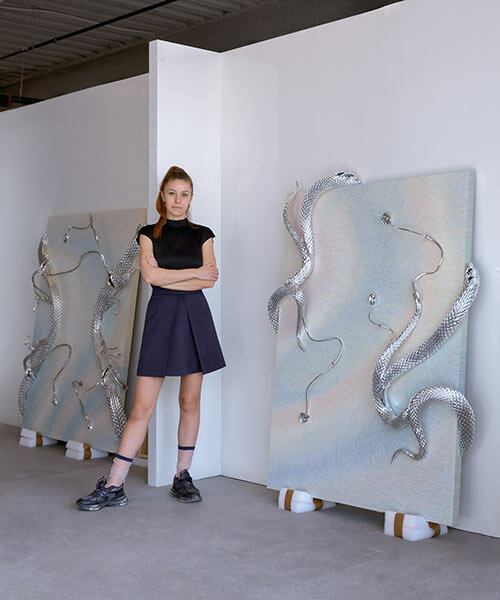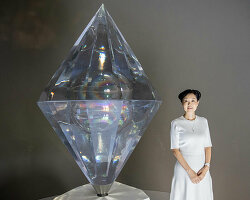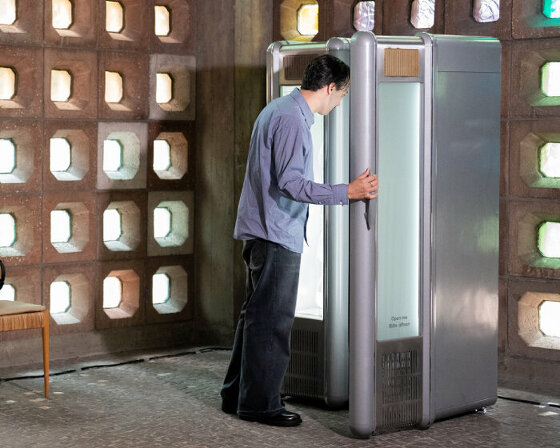
Anastasia Komar, Hydra, 2022, acrylic and glass polymer on board, 54 x 76 x 10 inches (detail). photography by installshots.art, courtesy of the artist and Management

Anastasia Komar, EDEn II, 2024, acrylic and electroplated polymer on board, 66 x 51.5 x 7 in (detail). photography by installshots.art, courtesy of the artist and Management, New York
KEEP UP WITH OUR DAILY AND WEEKLY NEWSLETTERS
PRODUCT LIBRARY
in less than a year, what started as a personal artistic project quickly grew into show-stopping collaborations for physical iterations in cities like jeddah and miami.
the honesty bar installation presents knötti, an alcohol-free drink made from local waters, german hops, and invasive japanese knotweed.
connections: +390
the staircase is inclined at a 5-degree angle — enough to be noticeable but not immediately obvious, creating a sense of doubt.
andrés reisinger brings his billowing pink 'take over' installation to hourglass cosmetics' new york city popup.
connections: +1240

 photography by Inna Svyatsky / installshots.art, courtesy of the artist and Management, New York
photography by Inna Svyatsky / installshots.art, courtesy of the artist and Management, New York photography by Inna Svyatsky / installshots.art, courtesy of the artist and Management, New York
photography by Inna Svyatsky / installshots.art, courtesy of the artist and Management, New York






















